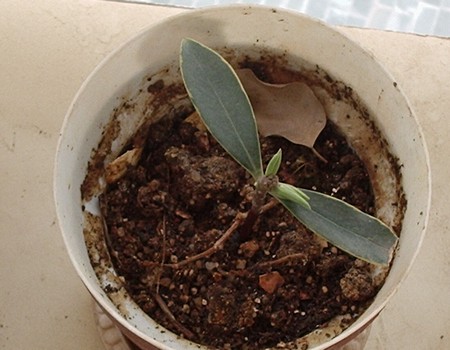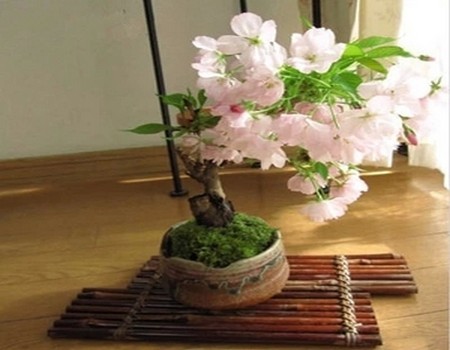Cutting method of Phnom Penh Daphne odora
Some flower lovers use indolebutyric acid when cutting to breed Phnom Penh incense. More than a month later, although some cuttings can sprout and spread leaves, they will not survive after a period of time. Even if they are replaced with new soil, they will eventually be wiped out, and there are three main reasons for cutting failure.

1. Improper cutting time
Phnom Penh Daphne is not cold-resistant, but also afraid of high temperature, so cutting must grasp the season, the time of cutting should be in spring and autumn, when the new buds will germinate in early spring, it is not easy to survive in other seasons. When cutting, select the branches grown in the previous year, cut into 10cm or so, the lower end with heel is better. Leave 2-3 leaves in the upper part and cut off the rest. It is better to be treated with exogenous rooting hormone. Sand bed cultivation should be shaded, keep the sand bed wet but not too wet, and Rain Water should be protected from rain during the season.
2. Improper external use of hormone
Cutting shrubs and flowers use indolebutyric acid as an exogenous hormone to promote rooting, which generally has obvious effect. However, if the concentration of indole butyric acid is insufficient and the treatment time is short, it will cause cutting failure. When using indole butyric acid, the general concentration should be 50ppm, and the treatment time should be 24 hours. If you want to finish the treatment in a short time, increase the concentration to 250ppm and treat it for 10 minutes. It should be noted that the treatment time of low concentration is long, while that of high concentration is short.
3. The phenomenon of "fake living"
In cuttage propagation, if the cuttings sprout quickly and grow leaves but not roots, that is, the phenomenon of "false living". Because the sign of cuttings survival is that cuttings have grown roots, but the roots have not yet grown, and cuttings consume the nutrients of cuttings in sprouting and long leaves, which is more disadvantageous to seedlings in the future. If there are many leaves, the air humidity is small, and the leaf transpiration is strong, it will cause the cuttings to lose balance and dry up.
As we mentioned earlier, Phnom Penh incense is difficult to bear fruit, so they are usually propagated by cutting. In view of the above phenomenon of failure of Ruixiang cuttings in Phnom Penh, we will introduce the specific operation methods for you below.
1. Cultivation season and region
The cultivation season of Phnom Penh Daphne is in spring every year, that is, March and April. At present, they are only suitable for cultivation in areas south of the Yangtze River in China, such as Jiangxi, Fujian, Guangxi, Guangdong, Zhejiang, Hunan, Sichuan, Yunnan, Taiwan and other provinces.
2. Cutting time
The cutting time of Phnom Penh Daphne should be from late May to mid-June or from late August to early September every year, because the temperature difference between the two periods is relatively small, which is very suitable for them to take root and sprout.
3. Preparation before cutting
Selection and treatment of cuttings: the selection of cuttings is very important, we should choose from 2-3-year-old plants, to select healthy, pest-free branches as cuttings, the selected branches have been semi-Lignification, according to practice, the survival rate of this kind of branches after cutting is very high. After cutting off the branches, we have to remove the excess leaves, leaving only 5 to 8 leaves, and cut them to about 7 centimeters. Too long will not only waste the branches but also affect the ornamental effect after survival. When cutting the branches, we should cut the cutting into an oblique section to increase their water absorption function.
The preparation of cutting medium: we should choose the medium with loose, breathable and good water permeability, and the nutritive soil or charcoal composed of pine branch and pond mud is the best. The media should be loaded into the plastic basket before cutting. be careful not to be too full and leave 3-5 cm at the top. After the installation, but also put them well, it is best to pad a layer of support with a height of 8-10 cm on the ground, and then put the fence basket on it. Next, we can carry on the cutting.
4. Cuttage
When cutting, we should first soak the cuttings in the rooting water. The rooting water is prepared according to the ratio of 1 gram of rooting powder to 1-2 kg of water, and the best depth of insertion is 1 inch 3 of the cuttage length. Too deep or too shallow insertion is not conducive to their survival, and the distance between plants is 5-7 cm.
5. Management after cuttage
After the cuttage is finished, in order to improve the survival rate, we had better spray water once every morning and evening, and the amount of water should be sprayed completely on the leaves as the standard, which can maintain the humidity of the cuttings and culture quality and promote their rooting and survival. Just let them develop naturally at other times, so that after about 30 days, they can take root and survive. At this time, we should pull out the surviving seedlings directly from the culture medium and load them into the nutrition bowl in time, so as to facilitate the following management work.
6. Upper basin
The nutrient soil used when potting is made of 25% pine leaves and hay, 40% pond mud, and 35% charcoal. We can choose smaller plastic flowerpots or nutrition bowls. First of all, we should put 2gamma 3 nutrient soil in the pot as the subsoil, then put the seedlings in the pot, and then fill the flowerpot with nutrient soil. After putting up the pots, we should put them in the greenhouse in time. Note that it is best to spread a layer of high objects on the ground before placing them in plastic flowerpots, and then put the seedlings on top. The distance between each pot should be controlled at about 8-10 cm. After the flowerpots are all placed, we should water once, the amount of water should not be too large, and the surface layer of nutritious soil should be soaked thoroughly. In addition, pouring a little water on the leaves is also very helpful to their growth. In this way, they can take root and survive after about 10 days.
Time: 2019-06-11 Click:
- Prev

Propagation technique of Japanese late Sakura
When it comes to cherry blossoms, perhaps most people think of cherry blossoms that can be seen everywhere in spring in Japan. But few people know that cherry blossoms are divided into early cherry and evening cherry. Morning Sakura is charming and charming, which fades after a short period of brilliance, resulting in a magnificent life. But the late cherry flowers are heavy, graceful and have a long flowering period, but it is not as good as the early cherry.
- Next

How does Phnom Penh Daphne breed? Propagation technique of Daphne odora in Phnom Penh
Phnom Penh Daphne is a kind of precious New year Festival flower with golden leaf edge, green and thick green, which is deeply loved by the majority of flower lovers during the Spring Festival. In addition, it also has high medicinal and chemical value, its roots, stems, leaves and flowers can be used as medicine, and the plant can also extract essence.
Related
- Fuxing push coffee new agricultural production and marketing class: lack of small-scale processing plants
- Jujube rice field leisure farm deep ploughing Yilan for five years to create a space for organic food and play
- Nongyu Farm-A trial of organic papaya for brave women with advanced technology
- Four points for attention in the prevention and control of diseases and insect pests of edible fungi
- How to add nutrient solution to Edible Fungi
- Is there any good way to control edible fungus mites?
- Open Inoculation Technology of Edible Fungi
- Is there any clever way to use fertilizer for edible fungus in winter?
- What agents are used to kill the pathogens of edible fungi in the mushroom shed?
- Rapid drying of Edible Fungi

